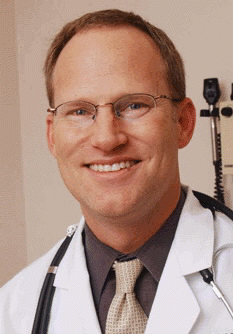He said it can be used in cases of frontal, sphenoid, or maxillary rhinosinusitis or a combination of these. It can be particularly useful in a debilitated or elderly patient, or in a patient in an intensive care unit or with a bleeding disorder.
Explore This Issue
September 2009The tool can also be used to get access to the frontal sinus, Dr. Setzen noted. But it should be used only after maximum medical treatment has failed, he said, including antibiotics, decongestants, nasal sprays, and antihistamines.
He said that the use of balloon sinus catheterization fits well with the trend toward a more conservative approach to surgery. With the balloon, very little is removed, Dr. Setzen said. This technology will make us more and more conservative.
Drawbacks to the balloon sinus catheter are radiation exposure, extra expense, the time it takes to learn how to use it, and the additional staffing required.
In a 2007 study, 115 patients (involving 358 sinuses) were treated with balloon dilation and evaluated for safety, for how well the sinus ostia were kept open, and to see how well the technology helped relieve patients’ symptoms.
 Maybe we shouldn’t be looking for ways to recruit more patients for surgery, but maybe we should be looking for ways to select the patients who would benefit from surgery and provide the right surgical intervention.
Maybe we shouldn’t be looking for ways to recruit more patients for surgery, but maybe we should be looking for ways to select the patients who would benefit from surgery and provide the right surgical intervention.-Bradley F. Marple, MD
The patency rate was 98% after 24 weeks, and patients showed improvements in symptoms.
In 53 patients who were given the Lund-MacKay test, used to assess before their procedure and after, there was marked improvement. The preoperation score was 8.89, compared with 1.95 afterward. Sixty-five patients took the Sino-Nasal Outcomes Test (SNOT-20), scoring an average of 2.14 before their procedures, 1.01 after six months, and 0.91 after one year. Both these findings were statistically significant.
Among 61 patients who had a two-year follow-up, the SNOT-20 score fell from 2.17 before the procedure to 0.87 after two years. For 32 patients followed up with the Lund-MacKay test after two years, the preoperation score was 9.66 and was 2.69 two years later.
In a multicenter registry of 1036 patients who received a balloon catheter sinusotomy, there were no major adverse events related to the use of the catheters. The revision rate was 1.3% after an average follow-up of 40.2 weeks, sinus symptoms were improved in 95.2% of the patients, and 73.8% of the patients were free of sinus infections during the follow-up period.
Leave a Reply